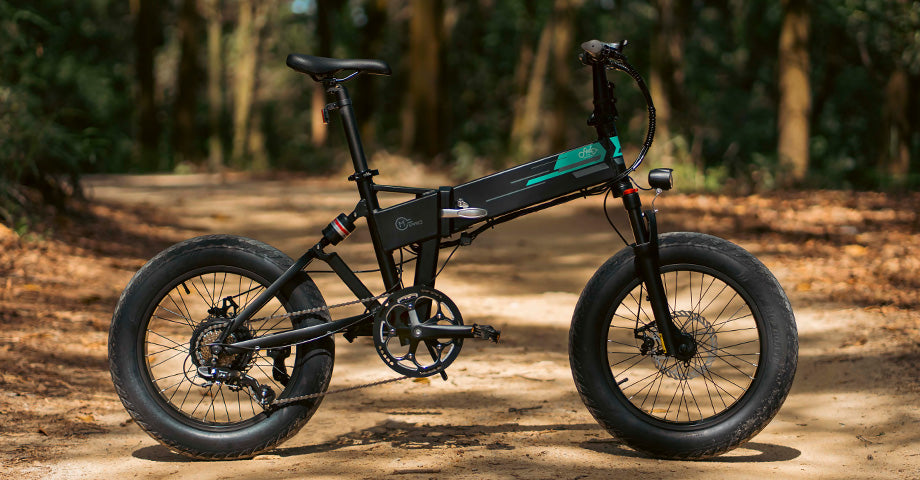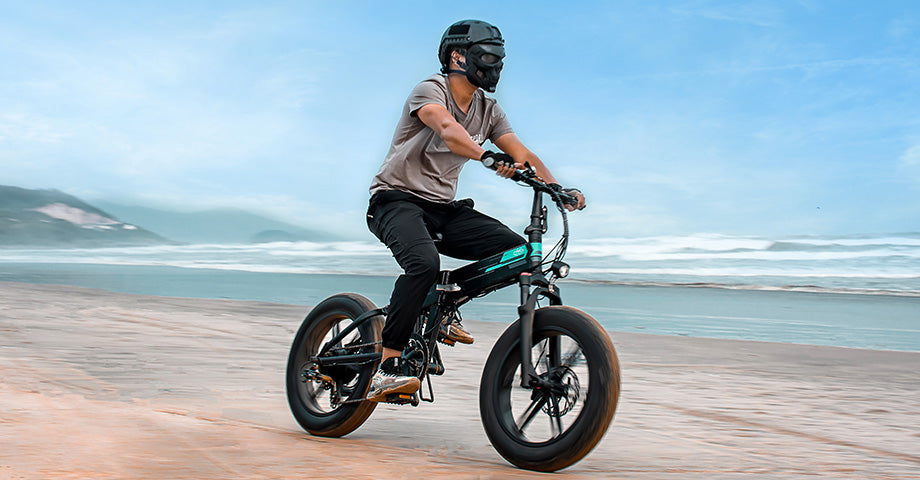Electric bikes are a genius concept, and it's hard not to want one when you learn about them. Before you make that purchase, it's understandable to want to know as much as possible so as not to be disappointed by your expectations. However, with electric bikes, the more you learn, the more you'll like them.
They work similarly to regular bicycles but also have some electrical components that make them different.
This article will educate you on all you need to know about electric bikes. You'll get a vivid description of what they are and how they work.

What are Electric Bikes?
Picture a regular bicycle but with electrical components like the motor, battery, and controller smartly added to it. It isn't usually bigger than traditional bicycles, sometimes smaller, in fact. Their tires can be thin or fat. Electric bikes can also be foldable.
How do Electric Bikes Work?
Before understanding how an electric bike works, it's imperative to know the essential parts that help it work the way it does. These crucial parts are in the battery, motor, and control system.
●Battery
The battery supplies the electricity needed to power your e-bike. These batteries can be lead acid or lithium batteries. Most manufacturers don't use sealed lead acid batteries for modern eBikes, mainly because of their bulky nature and short cycle times. However, lithium batteries are more portable and can last two to three times more than a sealed lead-acid battery. They also offer you more range.
●Motor
The motor is the component that receives power from your battery and uses it to power your electric bike when you use the pedal assist or throttle-only mode. Electric bike motors can either be hub motors or mid-drive motors. The hub motor sits in the front or rear wheel and drives the wheel when you activate it. Mid-drive motors transfer power to your bike using its drive chain. This power transfer method makes mid-drive motors more efficient on hilly or challenging terrains when compared to hub motors.
●The Control System
The control is used to access the features of the electric bikes. Most eBikes, like the Fiido M1 Pro Fat Tire Electric Bike, have it on their handlebar, which you can use to switch between the pedal assist mode, throttle-only mode, or no-assist mode.
The pedal assist mode provides you with assistance in your pedaling. You won't need to pedal with full power, but you'll go faster on the bike. Throttle-only mode, as its name implies, lets the bike move by itself without you pedaling it at all.
Of course, this mode puts a roll on your battery, and you won't get as much range as the pedal assist mode. You can also deactivate the electric features and pedal the bike manually. This versatility contributed to why electric bikes are becoming more popular.
The bike's control system will let you choose between these modes, either via a touchscreen, or using button controls. Some models even allow you to connect the bike to your smartphone and get a personalized experience. There are also accessories that you can add to the bike, which vary depending on the model.
So, electric bikes use a motor to offer you pedaling assistance, which in turn gets power from the battery. You can also use the throttle only method, which lets you do no pedaling, and the broken rides itself. All the other parts of the bike work to help ensure that the bike works that way.

What are Fat Tire Electric Bikes?
Fat tire electric bikes like the Fiido M1 Pro Fat Tire Electric Bike have wider tires than regular ones. Regular e-bike tires usually have a width of two inches. However, fat tire electric bikes have 4 inches or more, sometimes. This more width helps them handle more challenging terrains than regular tire eBikes.
For instance, you'll be better off with a fat tire electric bike if you live in a hilly area or must travel through snow, mud, or beach-like sand. However, wide-tire electric bikes also perform well on regular ground.
Note that these fat tires come with more sacrifices, like your battery may drain faster or need more energy to pedal if you want to use the no-electric mode. Nonetheless, fat tire bikes are fun to own and ride, and you should go for them if they entice you.
How Fast Can Electric Bikes Go?
Electric bikes can travel fast if there isn't something called a speed limit. How fast they can go depends on the speed limit of your location. The speed limits for electric bikes are different depending on the country.
For instance, it's 20mph in the US and even less in the UK, at 15mph. While most eBikes can go faster than 20mph, most motors regulate your speed when you ride too fast. However, some eBikes can reach speeds of 28mph.
The reason why eBikes are not allowed to be very fast is safety. The regulated speed will help you be in better control and help you be able to make decisions faster in case of possible accidents. You should conduct speed research before purchasing any e-bike.

What are the Advantages of M1 Pro Fat Tire Electric Bike?
Here are some reasons the M1 Pro Fat Tire electric bike is a top option for your commute.
1.Full Absorbers
The full absorbers of the M1 Pro are designed to give you maximum comfort. These absorbers are present at the front and back of the bike.
2.Foldable Frames
You don't need to worry about the space your bike would take during storage, as you can fold it into two! Also, its foldable nature makes it easier to transport, an aspect where it betters its non-foldable counterparts.
3.Cost Effective
The Fiido M1 Pro Fat Tire electric bike is ridiculously cheap for its features. You'd barely find much better deals on fat tire eBikes than this commuting marvel.
4.Fiido App
The Fiido M1 Pro Fat Tire electric bike also lets you connect your bike to the Fiido app. You can use it to manage the vehicle and interact with millions of fellow riders globally.
Conclusion
The concept of electric bikes isn't hard to understand. The battery powers the motor, which helps drive the pedal and gives you the pedal assist or throttle only mode. You can also decide to pedal the entire thing and ignore electric technology.
Nonetheless, they're a great vehicle to own and can make your daily commute more convenient. They have a control system that lets you control your bike. Most electric bikes will come with manuals on how you can operate them. Plus, it's not difficult to master how they work, especially if you have a regular bike.














